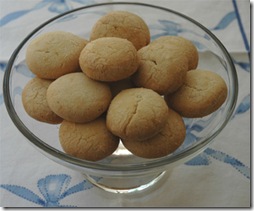Diwali Sweet Treats
Thursday, October 23, 2008
Posted by Meeta K. Wolff

Image Source: stock.xchng.com In Prayer
This year Diwali falls on October 28th and many of our Indian readers are probably busy getting ready for this spectacular festival.
Diwali or Deepawali is celebrated by Indians all across the globe and is celebrated for five consecutive days at the end of Hindu month of Ashwayuja. Of all the several colorful festivals India offers throughout the year, Diwali is the most vibrant, fun and glamorous festival of all.
It usually occurs in October/November, and is one of the most popular and eagerly awaited festivals in India. Also known as the Festival of Lights, Indians will decorate their houses with lights, candles and lamps - or as they are traditionally known in India - diyas. The lights and lamps signify the lighting of darkness and victory of good over the evil within.
Traditionally a Hindu festival, Jains and Sikhs alike regard it as a celebration of life and use the occasion to strengthen family and social relationships.
There are several beliefs as to the origin of the holiday. The most common version is that Hindus celebrate Diwali to mark the time when Lord Rama achieved victory over Ravana. Hindus believe that whenever the power of evil increases in the world, Vishnu comes down to earth in a different form to defeat evil. These forms are called Avataras. Krishna and Rama are the popular Avataras of Vishnu. Diwali celebrations are especially a time for telling stories - about Vishnu and his wife Lakshmi, about Krishna, Rama and his wife Sita and any other tales that personifies the good winning over evil.
For us Indians, this festival means connecting with family and friends and what a better way than to do it with food and sweets. Diwali is a period that marks new beginnings. Houses are thoroughly cleaned, a kind of Spring cleaning in Autumn, and re-decorated. The courtyards in Indian homes are decorated with rangoli, which are vibrant patterns created with powdered or wet paint. Doorways and adorned with decorative garlands made with the traditional gold marigolds and fresh mango leaves.
The kitchen becomes the hub for many households’ days before Diwali. Sweets, savories and snacks are made, lavish dinners are prepared, it truly is a festival unlike many others I have experienced. No expenses are spared, and everybody buys the best ingredients that is affordable to them.
As I know many of our Indian readers will be busy looking for ideas, I decided to put together a few great ideas for sweet treats I found while blog surfing.
Sweets
Indian sweets, which is known as 'mithai', are made with a variety of ingredients like semolina, wheat flour, chickpea flour or thickened milk, to which freshly grated coconut, carrots or white pumpkin is sometimes added. The mixtures, which are perfumed with sweet spices like cardamom and nutmeg, and embedded with nuts and raisins, are shaped into colorful shapes. All these processes - preparing, consuming and giving of sweets – are significant facets of the festival.
 Nankatai is a lovely flaky and buttery biscuit. They are typically served when the guests arrive around tea time. I found a perfect recipe for these delicate biscuits at The Cooks Cottage who makes her Nankatai recipe with saffron and cardamom.
Nankatai is a lovely flaky and buttery biscuit. They are typically served when the guests arrive around tea time. I found a perfect recipe for these delicate biscuits at The Cooks Cottage who makes her Nankatai recipe with saffron and cardamom.
Besan Laddoos are small balls of sweet heavenly delights. They are made by gently roasting gram flour and flavored with cardamom. Besan laddoos are extremely popular in India and are served as a simple sweet treat or as a bring along when visiting friends. Asha of Foodie’s Hope shares her delicious recipe for besan laddoos made the traditional way, by roasting the gram flour. However if you are looking for a quick method Nandita offers a great 5 minute beasan laddoo version.
Coconut Burfi is a lovely soft, chewy sweet often presented as a gift during festivities in India. Indira of Mahanandi makes a great version of the coconut burfi, without the addition of milk or ghee. She simply uses two coconuts, which she grated and adds cardamom for a gorgeous aroma. If you prefer a fruitier version over at Red Chillies you’ll find a rather scrumptious mango coconut burfi.
Sheera is a warm sweet very much like fudge, which is made using semolina, saffron, cardamom, raisins and nuts. There are several great recipes, some using fruit to flavour the sheera. One I found to be beautifully authentic was this Sheera recipe from Food for Thought .
.
Kheer – a gorgeous milky rice pudding, made with rice, rice flakes or sago. Deeba provides us with delicious kheer, spiced with cardamom, nutmeg and saffron.
Gajar Ka Halwa is a silky carrot pudding, which is one of India’s most popular desserts. There are several variations for this delectable dessert. My version is one I got from my grandmother. Using khoya, my gajar ka halwa adds a nutty mix of pistachios, cashews and almonds and uses very little sugar.
That was my quick tour of the blog-o-world of Diwali sweet treats, especially for you.
We from the Daily Tiffin team wish all celebrating Diwali a peaceful and joyous festival. Enjoy the time with family!
Are you interested in contributing to The Daily Tiffin? Drop us an email: thedailytiffin@gmail.com. We look forward to hearing your ideas.
This Post was written by Meeta






Thanks for a great post Meeta as Indians all around the world get ready for Diwali! for us Hindus, its New Year too, so its a double treat:) the nankhatai looks utterly delicious!:)